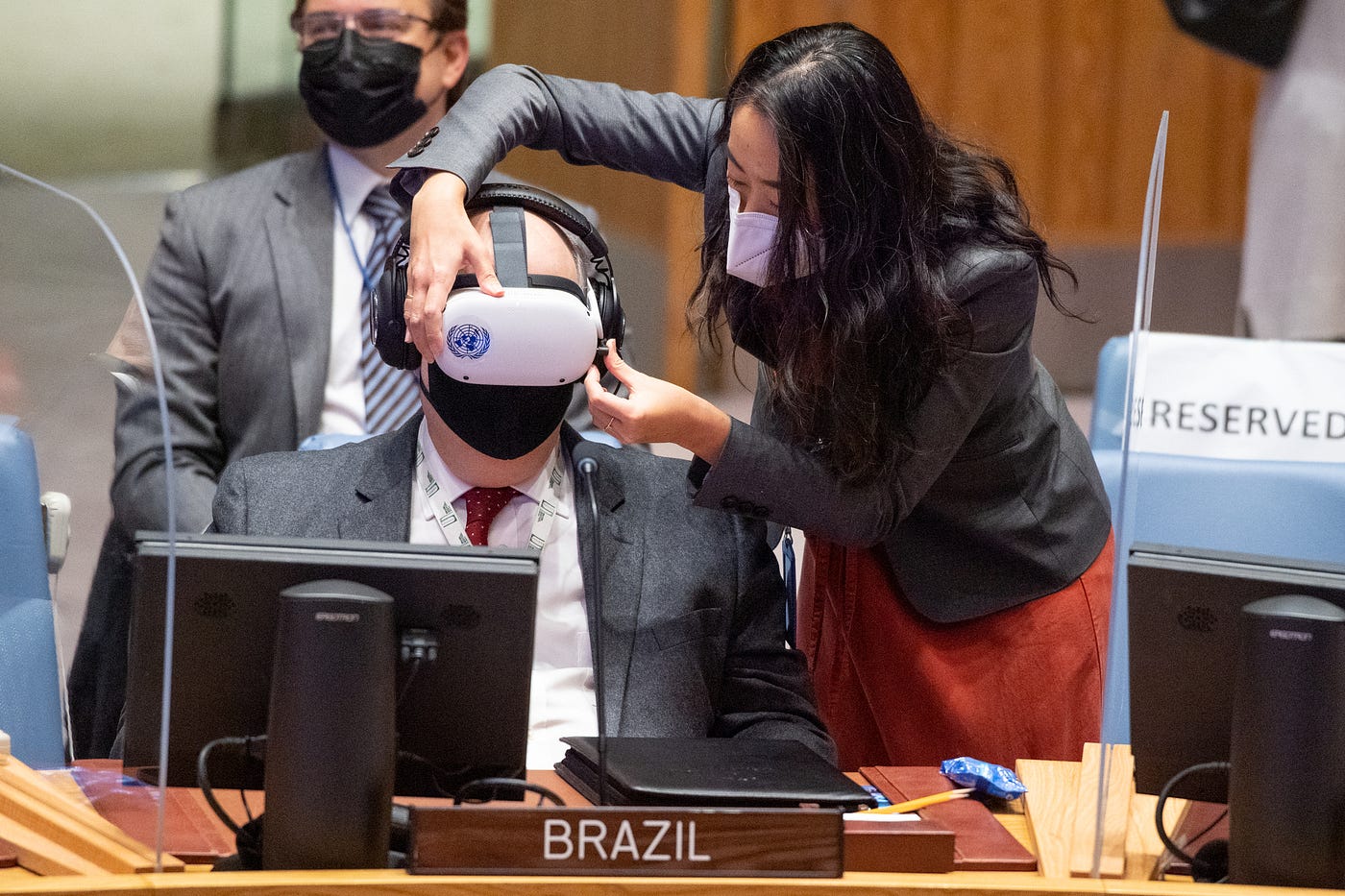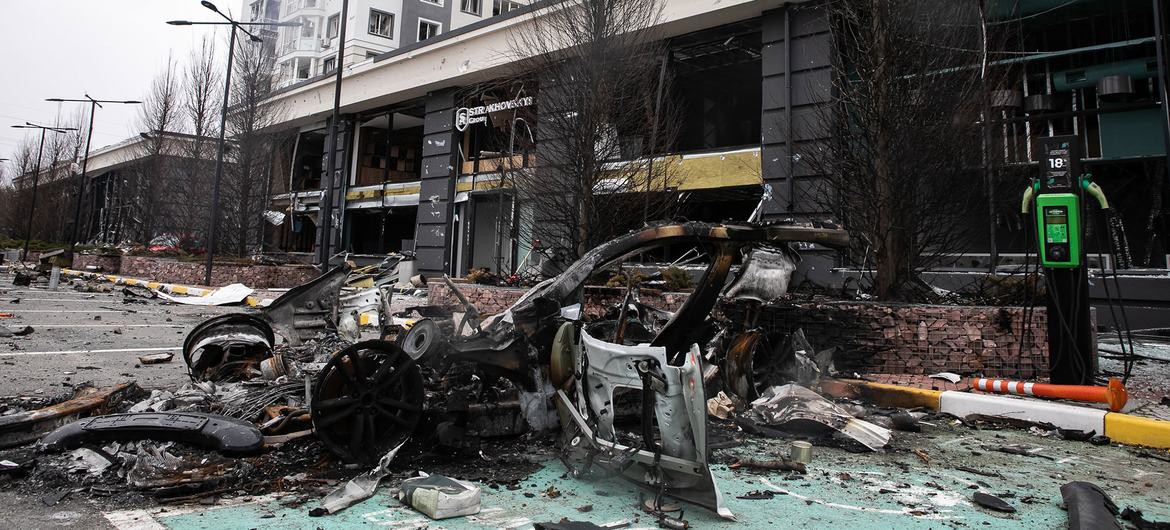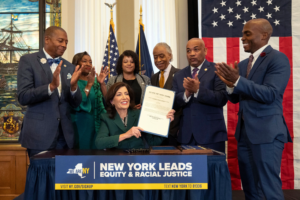The war in Ukraine is shaking the foundations of the international system. Geopolitical divisions and the increased regionalization and fragmentation of conflicts are challenging traditional tools of conflict resolution. The complexity of today’s crises requires resilience, innovation and flexibility of response. That means that the funding of the response must also be flexible enough to allow assistance to be deployed quickly where it is needed most. The Multi-Year Appeal (MYA) of the Department of Political and Peacebuilding Affairs (DPPA) aims to respond to that imperative.
The 2021 Annual Report of the MYA details how DPPA put the extra-budgetary funding it received last year to work. As Under-Secretary-General for Political and Peacebuilding Affairs Rosemary DiCarlo recalls in the publication, in 2021 DPPA was intently focused on responding to acute crises — including in Afghanistan, Ethiopia and Yemen – while maintaining the required attention on critical transition and peace processes in Colombia, Libya, Sudan, and elsewhere.

Ahead of the launch of the Report, we spoke to Delphine Bost, the head of DPPA’s Donor Relations team. She highlighted the importance of voluntary contributions for a Department responding to the growing demand for its expertise and services, and the challenges of fundraising in the current difficult international context.
DPPA’s annual report 2021 has just been issued. What do you see as its key messages?
Delphine Bost: The first message is, of course, a big “thank you” to our partners for their steadfast support. Over the years, the Multi-Year Appeal, has become a reference point in capitals to support the peace and security work of the Organization. We have a pool of around 40 donors, and we are grateful for their trust and support.
The second message is that, despite the global impact of the COVID-19 pandemic and with fewer contributions from donors, we were still able to deliver. We met nearly every benchmark in our Strategic Plan. Our toolkit for conflict prevention, from analysis to mediation and electoral support etc., was put to good use. A few achievements from 2021: 270 staff were deployed to negotiating tables around the world; our investment in innovation and new technologies increased by 7%, helping us to reach out to broader audiences in our mediation efforts; we invested 18% of the MYA budget to support the inclusion of women in peace and political processes; and our support to grassroots mediation activities through the Local Peace Initiative window increased by more than 60%.
The report also shows that long term investments — for example, our nine liaison presences in various parts of the world — are essential. Last year, our liaison team in Kyiv continuously monitored the rapidly changing situation in and around Ukraine. This proved to be invaluable to UN contingency planning and the engagement between senior UN leadership and Member States, including at the Security Council. Investing time and resources in better analysis, forging partnerships, is crucial. One is always tempted to focus on crisis-management, but we also need to invest in prevention.
And finally, the MYA supports additional capacity at Headquarters and in the field. It allows us to innovate — the work of our Innovation Cell and our work on climate security are MYA-funded — test new ideas, and be bolder. Allocations under the regular budget, when they come, take time, which is not as conducive to “thinking outside the box” or being quick and responsive.
How is the report different from last year?
Reporting on our field of work is not an easy task as how we reduced the risks of violent conflict is difficult to measure. With each report, we try to better explain the actions that we take at key points to change the trajectory of conflict. For example, in this report we included a timeline on Libya, showing key moments of our engagements last year.
The report also tries to illustrate the importance of donor investments in DPPA’s key thematic areas.
In the past two years, the world has been dealing with the impact of the pandemic, and we’re now grappling with the global repercussions of the war in Ukraine. Is there an impact of these crises on fundraising for the UN’s work in conflict prevention, mediation and peacebuilding? What are our main concerns in this regard?
We felt the impact of COVID-19 on fundraising for the MYA as some donors struggled with budget constraints and had to re-direct official development assistance (ODA) funding towards other priorities. While the last few years have been marked by a steady increase in contributions, 2021 saw MYA’s income plunging by 15%. We received a total of $28.5 million, out of $40 million requested, leaving a funding gap of $11.5 million.
At the same time, the increase in earmarked funding by 13% in 2021, compared to the previous year also raised the alarm. The MYA is a pool funding mechanism, and its flexibility and ability to fund initiatives across its three goalsis a key factor in its success.
Looking ahead, there are signs that ODA budgets are being re-prioritized to cover for new military expenses, or to cover the costs of hosting the refugee population, and related humanitarian needs. This will, of course, further complicate our resource mobilization efforts at a time when we are facing increased demands.
How will you cope with this new difficult financial environment?
We will approach it in different ways. First, we will be repositioning the MYA to meet the needs and challenges guided by our new Strategic Plan 2023–2026. We are taking a closer look at the MYA business model to maximize fundraising and make it more efficient.
But the only real sustainable solution is prevention, which can help reduce the number of crises that break out and create space to engage our conflict management tools without being overwhelmed. All solutions to conflicts are ultimately political, and we need to make sure that we have proper funding to support the work of the Department.
Highlights in 2021:
DPPA deployed mediation experts to negotiating tables around the world
DPPA’s Mediation Support Unit oversees the Standby Team of Senior Mediation Advisers who can be rapidly deployed to provide advice on a wide range of issues that arise in mediation and preventive diplomacy efforts, funded entirely by the MYA.
In 2021, the Standby Team provided operational support on 122 occasions in 28 different contexts from Bolivia to Georgia, Sudan and South Sudan.https://cdn.embedly.com/widgets/media.html?src=https%3A%2F%2Fe.infogram.com%2F5a2848c4-4e26-4dfd-bec0-ae91eda6b7ae%3Fsrc%3Dembed&display_name=Infogram&url=https%3A%2F%2Finfogram.com%2Fstandby-team-support-in-different-regions-1h8n6m350qv1j4x&image=https%3A%2F%2Finfogram-thumbs-1024.s3-eu-west-1.amazonaws.com%2F3b152a1a-75be-4bfa-ae55-33c581931fd0.jpg&key=d04bfffea46d4aeda930ec88cc64b87c&type=text%2Fhtml&schema=infogram
DPPA assisted Member States to conduct peaceful and credible elections
Electoral support was provided to over 50 member states by deploying 24 missions. These included needs assessments in Bolivia, Lesotho, Malawi, São Tomé and Príncipe, South Sudan and Sudan.
Team of Experts continued to recommend parameters for UN electoral assistance, advising on the design of related mission components or projects, and offering political and technical guidance to all UN entities involved in electoral assistance.https://cdn.embedly.com/widgets/media.html?src=https%3A%2F%2Fe.infogram.com%2Fc9a8f03b-b860-4a4a-bf38-94867003d778%3Fsrc%3Dembed&display_name=Infogram&url=https%3A%2F%2Finfogram.com%2Fun-electoral-assistance-2019-2021-by-geographical-regions-1h7z2l85wqrqg6o&image=https%3A%2F%2Finfogram-thumbs-1024.s3-eu-west-1.amazonaws.com%2F85cf4ab2-7d85-4f03-a53e-d08ef1e863de.jpg&key=a19fcc184b9711e1b4764040d3dc5c07&type=text%2Fhtml&schema=infogram
DPPA pioneered new ways of addressing the impact of climate change

Collaboration with regional organizations, Member States, civil society and research institutions, on climate security has reinforced DPPA’s standing as a thought leader in this complex risk landscape.
DPPA supported action in most-affected regions and built the capacity of partners in the field by, for example, reaching over 750 practitioners with virtual trainings and maintaining an active UN community of practice working with the Climate Security Mechanism.
DPPA embraced innovation and new technologies

DPPA invested in cutting-edge technologies leading to the inclusion of diverse voices in political processes — particularly the voices of women and youth. This lowered access barriers for groups that are traditionally excluded from decision-making and allowed political and peacebuilding processes to be more inclusive, for example in Libya, Bolivia and Iraq.
DPPA’s Innovation Cell provided a forum for colleagues to engage collaboratively in human-centered design and problem-solving. This ranged from using open-source earth observation to identify climate-related conflict triggers, to forging connections with decision makers with virtual reality.
DPPA advanced the meaningful inclusion of women
The new WPS funding window further operationalized the agenda, by funding up to $7.2 million worth of projects in support of the inclusion of women in peace and political processes, a record high.https://cdn.embedly.com/widgets/media.html?src=https%3A%2F%2Fe.infogram.com%2F7a6c1155-e54a-4ab0-a51a-73ddde95a4b4%3Fsrc%3Dembed&display_name=Infogram&url=https%3A%2F%2Finfogram.com%2Fnumber-of-projects-that-were-entirely-dedicated-to-wps-or-that-significantly-contributed-to-wps-1h7j4dvy0gw1v4n&image=https%3A%2F%2Finfogram-thumbs-1024.s3-eu-west-1.amazonaws.com%2F21d891fa-e197-4090-bf33-bf318863f189.jpg&key=a19fcc184b9711e1b4764040d3dc5c07&type=text%2Fhtml&schema=infogram
For more, check out the web version of the 2021 annual report here




